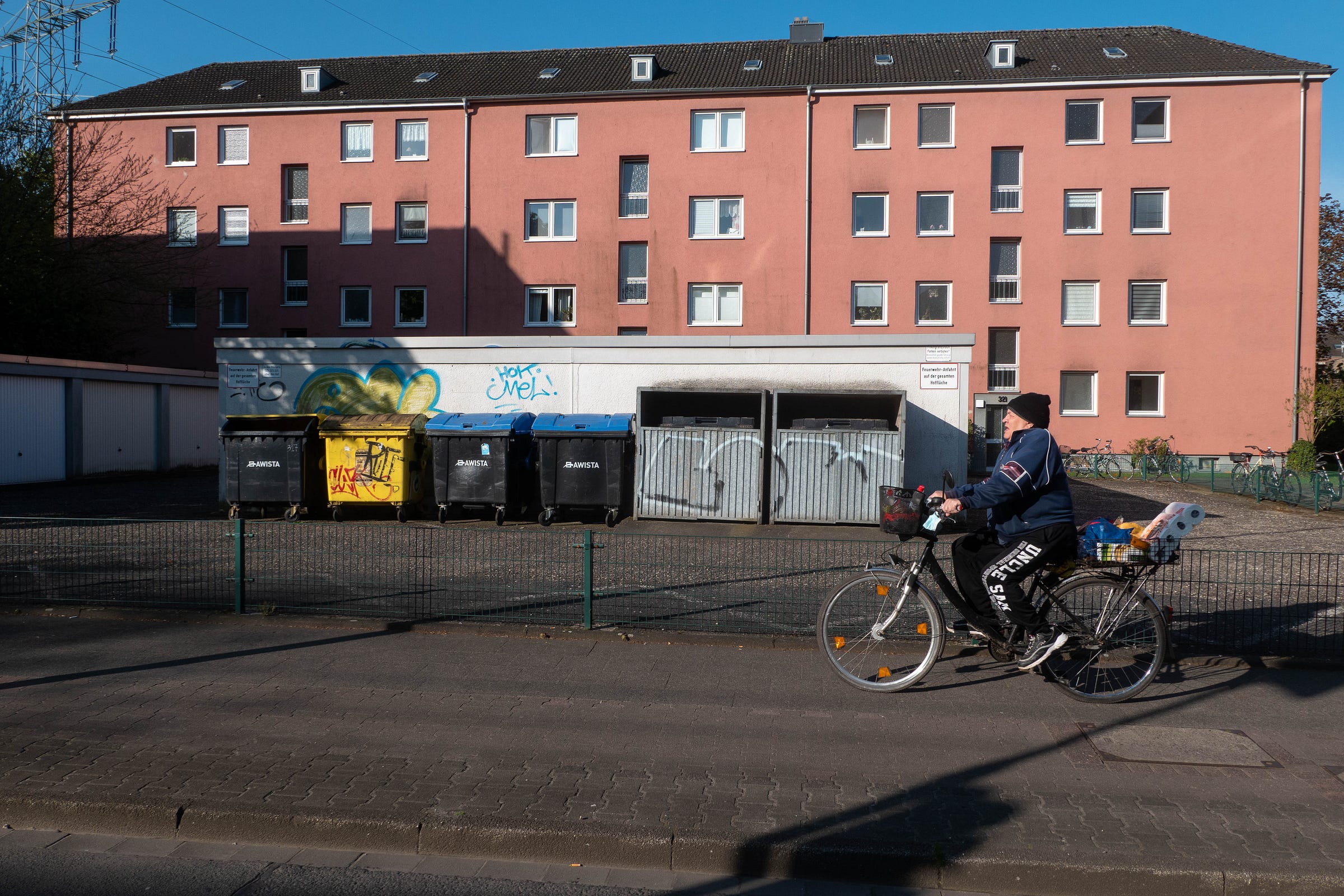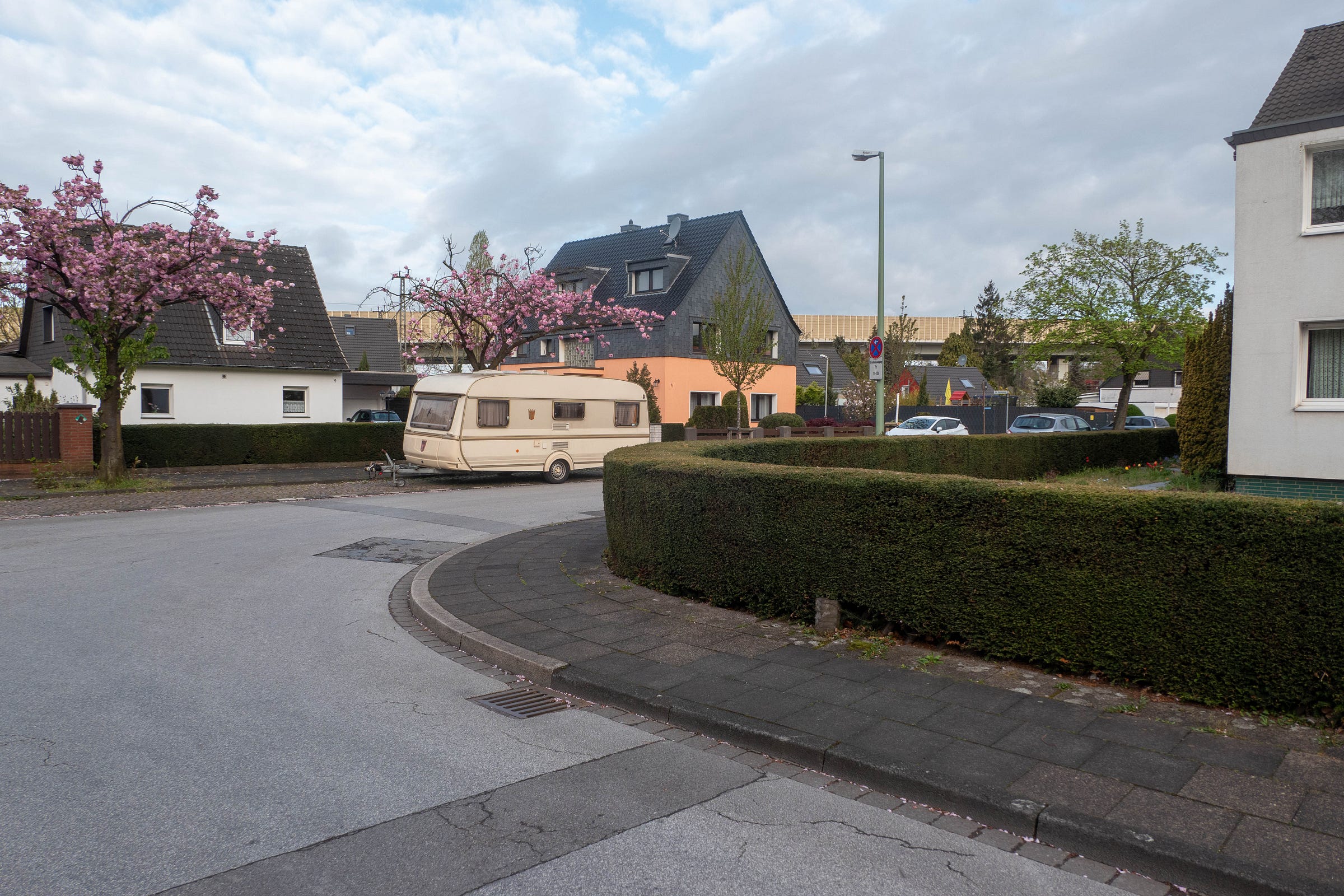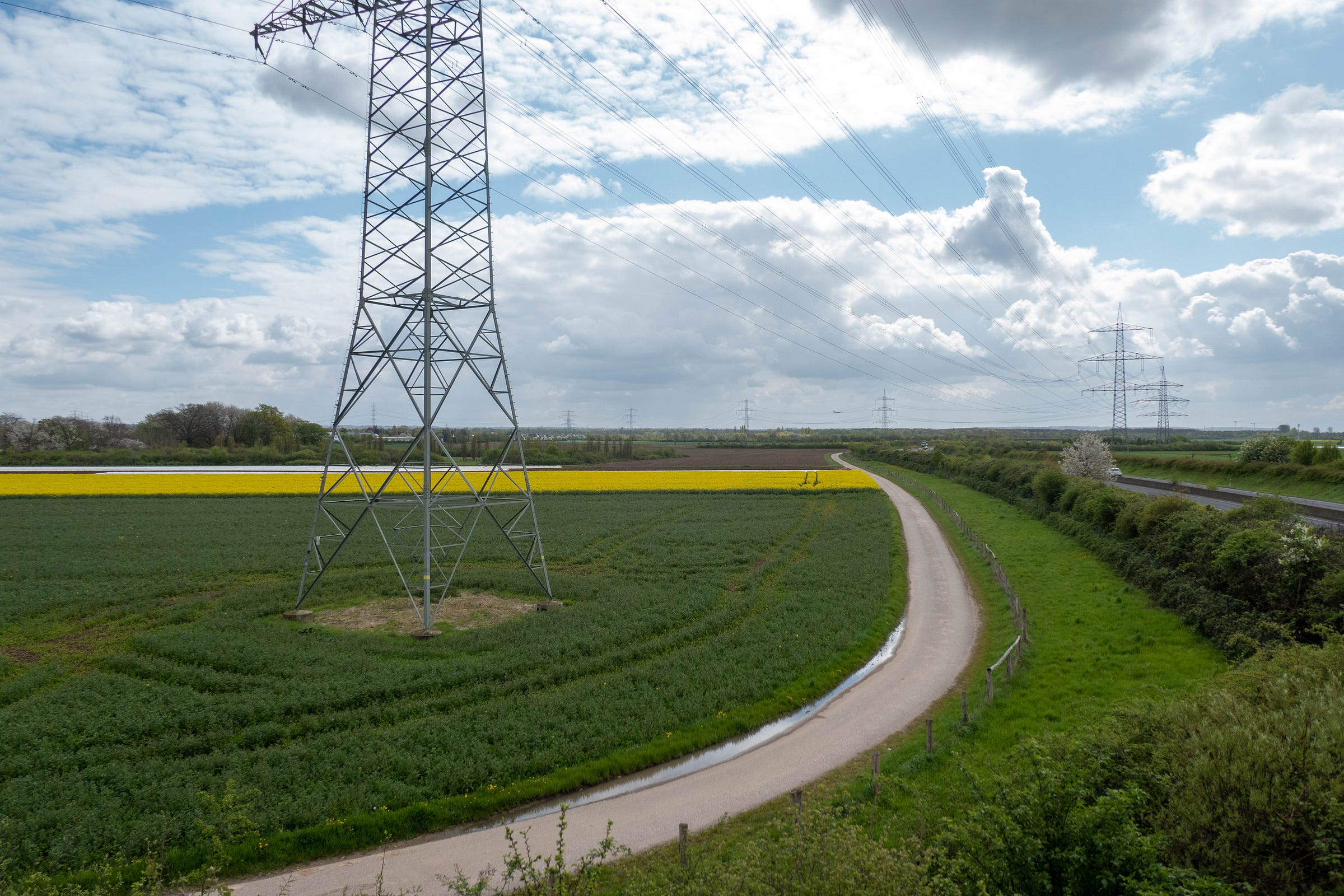(Part 1 of my long German walk is here: Walking the Ruhr Valley: From Dortmund to Duisburg)
I left Duisburg in a cold drizzle, depressed, and four days later I arrived in Cologne less depressed, but still in a cold drizzle.
The two cities are only forty miles apart, and while both were “bombed into rubble” during WW2, Cologne was and is wealthier, and it shows. Duisburg seems to have been rebuilt on the cheap, a playground of large boxy buildings trying to hide their ugliness with bright colors. It hasn’t worked. While there’s plenty of history in Duisburg, it’s hard to find, and it’s little celebrated, beyond sad branding attempts that come off as bureaucratic and desperate.
Cologne by contrast has the feel of that timeless, yet quaint, heft that Americans love in European cities, using its wealth to rebuild as closely as possible to what came before. Or at least close enough to fool these eyes.
But it wasn’t only the buildings and rain (that never went away)1 that was depressing me in Duisburg. I was tired and numbed by the sameness of everything that came before. Of walking for four days and fifty miles through a vista of factories, cheap housing complexes, and autobahns, only punctuated by town centers of drunks, shopping malls, and doner kebab shops.
I hadn’t seen any nature, or at least nature that felt wild, despite always being at most a mile from the Ruhr river.
That changed quickly as I turned south, heading towards Dusseldorf, roughly walking along the Rhine, although you can’t really do that, not if you’re constrained by time, because if any river snakes it’s the Rhine.
Roughly five miles outside of Duisburg space opened up, the buildings thinned, and the factories receded, hid behind trees and walls, and nature started to creep into the gaps. I even found my path going through fields of flowers, crops, and plowed dirt.







